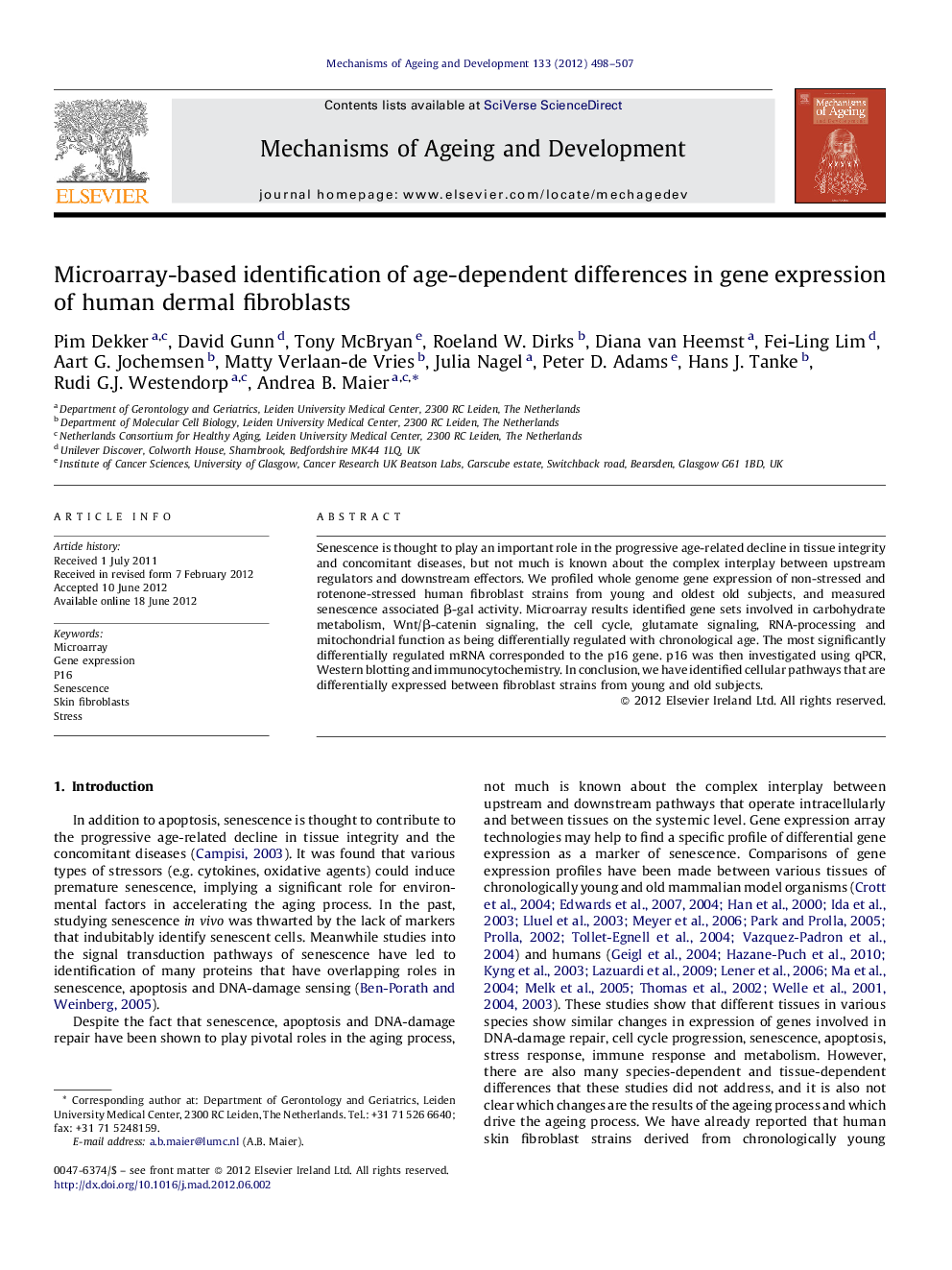| Article ID | Journal | Published Year | Pages | File Type |
|---|---|---|---|---|
| 1919314 | Mechanisms of Ageing and Development | 2012 | 10 Pages |
Senescence is thought to play an important role in the progressive age-related decline in tissue integrity and concomitant diseases, but not much is known about the complex interplay between upstream regulators and downstream effectors. We profiled whole genome gene expression of non-stressed and rotenone-stressed human fibroblast strains from young and oldest old subjects, and measured senescence associated β-gal activity. Microarray results identified gene sets involved in carbohydrate metabolism, Wnt/β-catenin signaling, the cell cycle, glutamate signaling, RNA-processing and mitochondrial function as being differentially regulated with chronological age. The most significantly differentially regulated mRNA corresponded to the p16 gene. p16 was then investigated using qPCR, Western blotting and immunocytochemistry. In conclusion, we have identified cellular pathways that are differentially expressed between fibroblast strains from young and old subjects.
► We compared gene expression of fibroblast strains from young and old subjects. ► Differences in expression levels were found between these groups. ► Various gene sets were responsible for these differences. ► These were gene sets involved in metabolism, cell cycle and mitochondrial function. ► p16 was most differentially expressed at mRNA and protein levels (immunocytochemistry).
